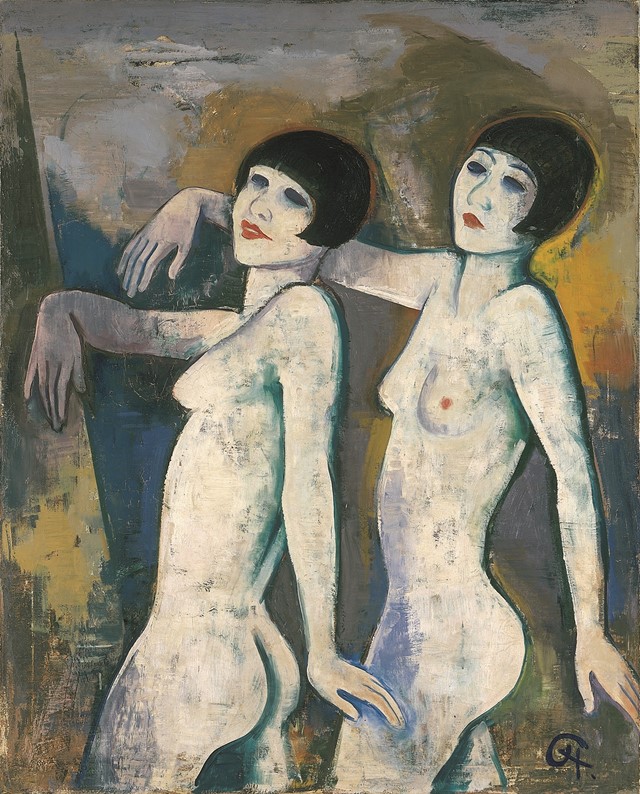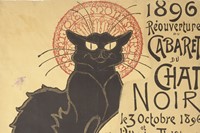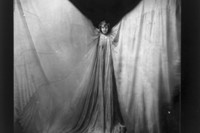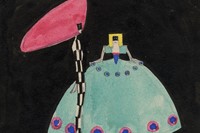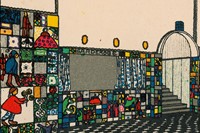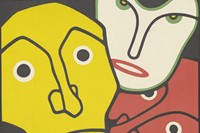The Barbican’s new exhibition Into the Night explores after-dark socialising through the lens of pioneering artists. Here, a look at some of the artworks featured in the immersive exhibition
The Barbican’s excellent new exhibition, Into the Night, is billed as “a journey into the world’s most iconic cabarets, cafés and clubs in modern art through the lens of pioneering artists”. It includes works inspired by world-famous spaces such as Paris’ Chat Noir and Zurich’s Cabaret Voltaire, but also by lesser-known venues which became hubs for creative folk and free-thinkers in 1920s Mexico City, 1960s Nigeria and 1960s Tehran. Art inspired by London’s Cave of the Golden Calf, often described as the UK’s first modern-day gay bar, also take pride of place.
“The genesis of the exhibition was trying to think of another way of showing art,” says curator Florence Ostende. “I thought about how I learned about art as a child, and how it was so often connected to these amazing meeting places for artists – think about the incredible ideas that emerged from the heat and smoke and screams of a space like the Cabaret Voltaire.” Ostende says she’s always been fascinated by these stories and thought that recontextualising them could “allow us to present an alternative narrative of how art was made – away from the loneliness of the [artist’s] studio, and what we usually see in museums”.
The exhibition is definitely committed to conveying the vibrancy of these spaces: architect Adam Caruso and his team have painstakingly recreated the stunning, multicoloured tiled entrance that welcomed guests to Vienna’s Cabaret Fledermaus at the turn of the century. Visitors can also step into the courtyard of the Mbari club in Ibadan, Nigeria with its murals by Uche Okeke. But it’s also keen to challenge how we think about social spaces. Ostende acknowledges that the clubs and cabarets of Weimar Germany, so familiar from Christopher Isherwood’s Goodbye to Berlin and Liza Minnelli in Cabaret, could have been the exhibition’s “most predictable section”. So she decided to spotlight “all the incredible female artists working in Germany in this period that we’ve rediscovered in the last ten years”. The painter Jeanne Mammen, Ostende cites as an example, “contributed a lot to how Berlin nightlife was depicted, and in very subtle and surprising ways”.
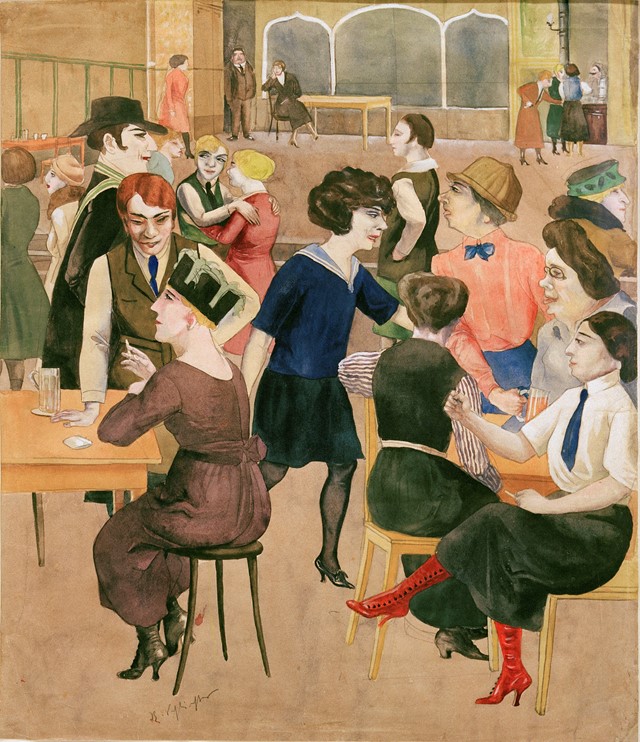
But Into the Night is no exercise in nostalgia or pining for a past that now appears increasingly chic and exotic. “I hope that this exhibition will encourage people to think about how we currently live in our social spaces and how this can generate new forms of thinking,” Ostende says. “Actual physical encounters with your peers is something that’s very precious; virtual social networks may be incredibly important now, but as human beings we still feel that need to meet face-to-face and have a proper dialogue with one another.”
Into the Night: Cabarets and Clubs in Modern Art is at the Barbican, London until January 19, 2020.
